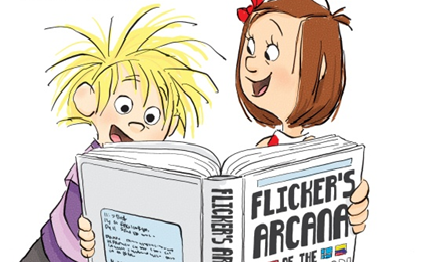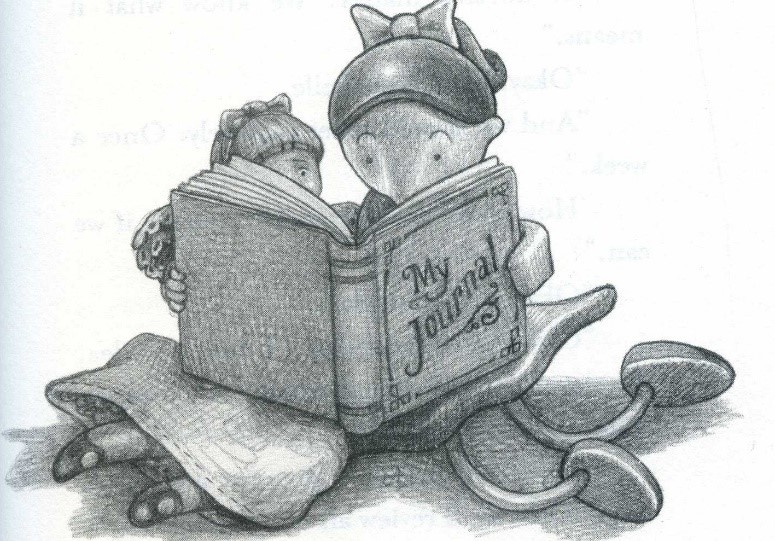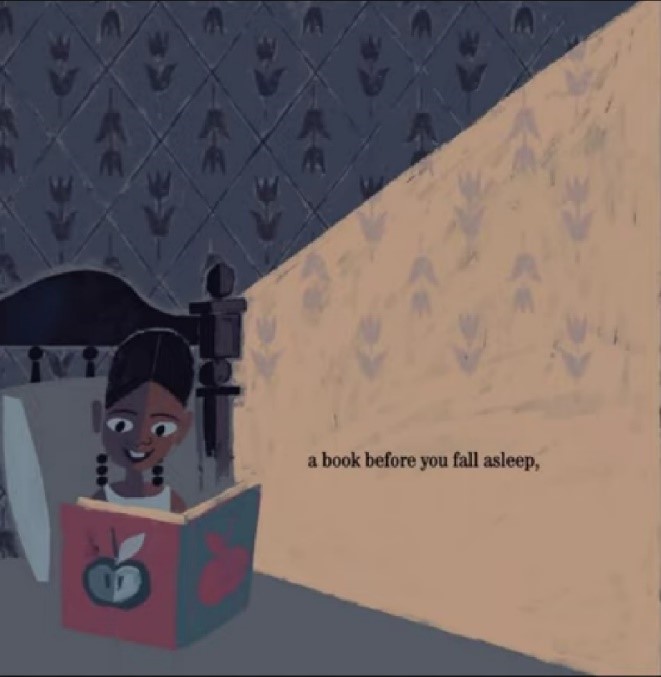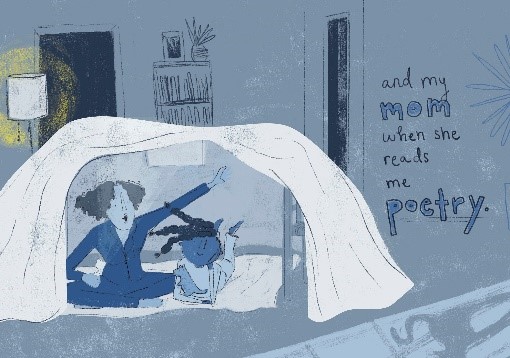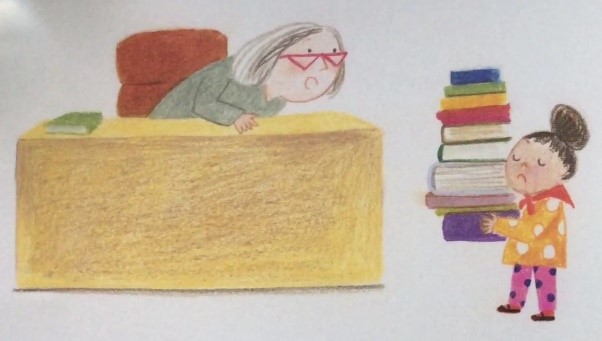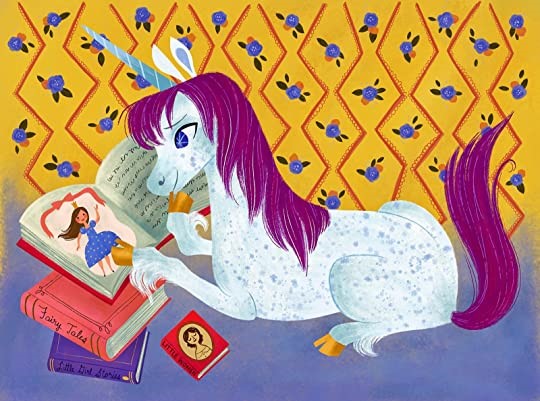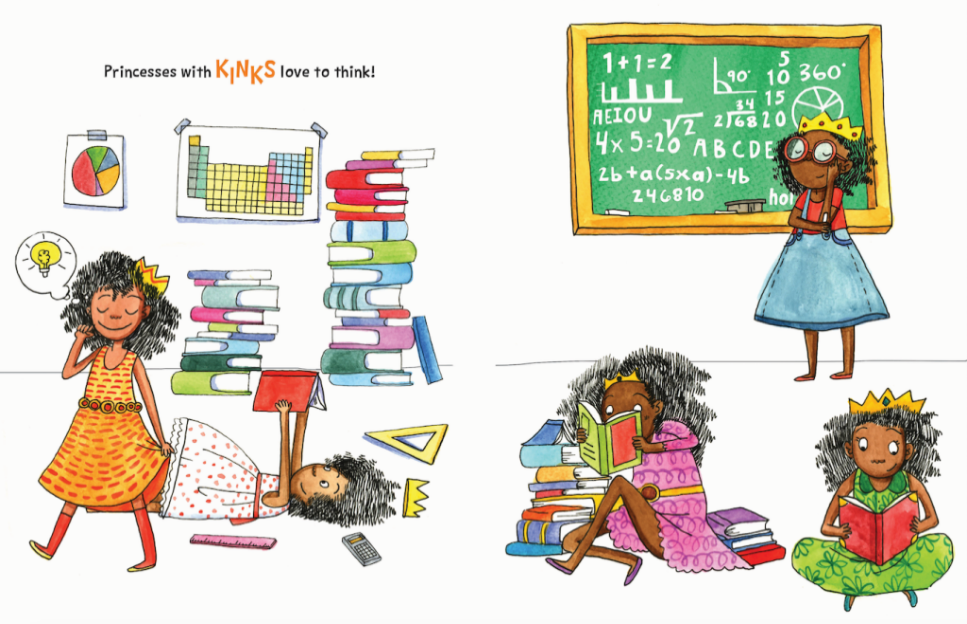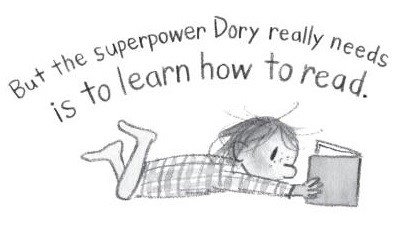Introduction
In childhood, we normally absorb all the information we receive without questioning it. Therefore, it is extremely important - almost an ethical duty to us - to analyse any cultural product intended to be consumed at an early age (), especially when these cultural products are disseminating and perpetuating ideological and civil values, as is the case of gender equality.
Children’s and young adult stories help readers construct their gender identity. This is an especially relevant issue if we consider that the influence of literature on the construction of each person’s identity begins at a very early age ().
states that children’s and young adult literature is a very important means to convey cultural and ideological values. Therefore, many of the plays and their characters articulate the norms of behaviour and emotions that girls will identify with. Many authors highlight the importance of children’s and young adult literature (hereinafter LIJ, as per its Spanish acronym) for the shaping of our gender identity, for the preservation of hypostasised roles and for fostering or preventing sexist attitudes (; ; ). Although children’s literature conveys values that can strengthen existing stereotypes or, on the contrary, oppose them (), the truth is that, until the 1970s, the general tendency was to segregate certain values and qualities very clearly to one gender or the other, associating female characters with more active and leading values, and relegating female characters to more passive roles (; ; ). Proof of this is that, even in contemporary LIJ, female main characters are fewer and they are generally represented in a more stereotypical way (;; ; ; ; ; ).
Although it is true that - especially from the second half of the 20th century onwards - there were already numerous works that carried the germ of a revolutionary message regarding gender issues (; ), it is also true that, for decades, children’s fiction has historically presented a rigid and sexist image of men as superior, stronger and more rational beings, showing women as weak and inferior in their rational and intellectual capacities (). One of the aspects that have helped to perpetuate these strict gender roles in LIJ is the association of male characters with public-intellectual tasks and female characters with domestic tasks: “It is possible to identify the symbolic association, on the one hand, of women with nature [...] On the other hand, men are associated with culture, and thus with the creation of symbols”. (). In fact, one of the clichés traditionally assigned to women is that of “little intellectual development” (). This can be seen, for example, in the different objects linked to female and male characters. In a very enlightening study, conclude that the apron is one of the objects most frequently linked to women, while objects such as glasses (which could be a metonymy of training and logical intelligence) are often linked to men.
However, the role of women in children’s literature has evolved significantly. In addition to the roles traditionally reserved for women, today we also find heroines of all kinds: Warriors, philosophers, rebels or compulsive readers as in this case (). We are progressively finding female characters who are more connected to the intellectual sphere. In fact, one of the demands of classical feminism has been women’s access to education: “Feminism and education go hand in hand. Education is the first demand of feminists and is present in their agenda at all times” ().
Liberal feminism, and specifically the writer , agrees on this point, and she argues the need for women to have a minimum of wellbeing and economic stability to provide them with sufficient existential tranquillity to be able to read, educate themselves, reflect and, from there, act in order to emancipate themselves and achieve autonomy.
In this article, the link between female characters and reading will be analysed. The 35 works analysed show female characters in a continuous and close relationship with books. Referring to Virginia Woolf's famous essay, A room of one’s own (1929/2014), in the works we are going to analyse, reading gives the female characters a space of autonomy and reflexivity in which to gain awareness of the world and of themselves. The female individual develops and articulates her own vision of the world and a way of being in it through reading. Reading is a kind of immaterial space where women forge themselves and can gain strength, resilience and self-confidence (1929/2014).
Method
In this paper, a descriptive and interpretative analysis of American children’s literature so far in the 21st century has been conducted. Bearing in mind that it is impossible to analyse all the books published since 2000, a corpus of 35 works has been used. The following criteria were used to make this selection; all the books selected:
-
- Were originally written and published in English.
-
- Are aimed at children (0-12 years).
-
- Were published from 2000 onwards (in particular between 2000 and 2021).
-
- Are written by women who are US citizens or residents.
-
- Feature female characters.
-
- Are fiction books (biographies are not included).
-
- Are award-winning works.
The methodology followed was qualitative, based on the descriptive analysis of texts and the analytical reading of the works. It is documentary research that “uses data extracted from the analysis, review and interpretation of documents that provide relevant information for understanding the phenomenon” (). This way, the presence and characteristics of girls and women readers have been studied as the main theme and guiding thread of this essay. This presence has been traced in both texts and illustrations, as stereotypical behaviours are identified in LIJ both through the written word and through the pictures that accompany it ().
However, the fact that there are female readers does not per se guarantee that it is a co-educational work or that it seeks to reflect egalitarian behaviour. Therefore, the link between female characters and reading and their impact on their subjective shaping and on the development of the plot has been critically analysed according to the following criteria:
-
- Reading has an impact on the plot of the work.
-
- The girls in these books show socio-cultural and ethnic diversity and represent different models of femininity.
-
- Reading, more than just a hobby, is important in the lives of the main characters.
-
- Girls connect with other characters and with themselves through reading.
-
- Reading helps them to look for solutions and alternatives in their lives.
-
- Reading helps them to rebel and empower themselves.
Two main types of sources were used to compile the list of 35 selected books:
-
- On the one hand, the lists of renowned awards for this genre of books: Medalla Cadecott, Astrid Lindgren Memorial Award, Ezra Jack Keats Award y Children´s Literature Legacy Award.
-
- In addition, the following repositories and journals have also been consulted: Horn Book Magazine, Kirkus reviews, 2x2 Reading list from Texas Library Association and Best books Publishers Weekly.
Analysis of the works
Despite the fact that there is still a predominance of the masculine in all areas of culture and that gender stereotypes are still perpetuated, so far in the 21st century, children’s literature has been giving more and more space to female roles in order to present a more contemporary and real vision of women and girls in all their facets (;; ; ).
One of these aspects is their relationship with reading; through their contact with books, the female characters in the works we are going to analyse forge themselves, achieve a greater degree of autonomy and self-awareness and even help to resolve the plots.
Reading as a hobby
The girls in these stories often love reading, and spend much of their time surrounded by books, as is the case with the Ling and Ting sisters in the popular series of books by author Grace Linn. The book Ling and Ting, not exactly the same (2010) starts with one of the sisters reading and the other interrupting her to ask her to tell her a story.
There are many other books in which we find this link between female characters and reading:
In , the main character, Flora, is a child and an eager reader: “I like letters and I like words” (p. 67). Flora is not the only character with a passion for reading. So are her mother, who is involved in a children's book club, and Miss Meriwether, who owns a second-hand bookshop she founded.
This passion can also be seen in Vita Murrow's original reinterpretation of Snow White (2018), in which Snow White’s main hobby is reading: “She didn’t have to attend events with her stepmother, so with her free time, she read newspapers and stories […]” (p. 84).
Another classic of contemporary American literature is the Bink and Gollie series, published by Kate DiCamillo between 2010 and 2013. Reading is part of the routine of the two friends and is often the starting point for many adventures that will make them expand their world, mature and strengthen their friendship. It is not surprising, then, that the two main characters are often shown reading (picture 1).
Reading is not only a very important hobby for girls, but also a bonding activity through which they can spend time together, whether they are two friends, two sisters, two classmates, or a mother and daughter. For example, the Ling and Ting sisters always buy their books with the intention of exchanging them among themselves: “She sees a book that she wants to read. -I will buy this book for Ting- Ling says -Maybe she will share it with me” ().
In the illustrations of many of the books at stake, we can see this kind of sisterhood reinforced by the common bond of reading. In some cases, such as Bink and Gollie (), Bedtime for mommy () or How to babysit a grandma (), it is simply a shared hobby, but in others, such as The doll people (), Poems in the attic () or The only black girls in town (), it is a means that helps them achieve collective empowerment (image 2).
Another of the most interesting themes that emerge in this corpus of works is the close and peculiar bond that is established between the female characters and the books and which, in some ways, is completely different from that experienced by the male characters:
Laure Adler argues that there is a special link between women and books. “Books”" she writes, “are not for women an object like any other. […] a warm current circulates between them and us, a secret affinity, a strange and singular relationship” [...] Perhaps there does exist, then, a special attitude of women towards reading, perhaps it has played a singular and different role in our lives, and has helped us to acquire another vision of the world [...] ().
In , there is a paragraph that perfectly exemplifies this close relationship between women and books; the mother of the main character works in a used bookshop and does so because “it put her in touch with paper. That´s how her mother described it. Holding books and seeing the printed black ink on the pages made her mother happy. She felt useful, her mother said. Useful to books” (p. 32).
In contrast, the male characters in the selected corpus have a very different relationship not only with books and reading but also with the broader field of knowledge and learning. In this line of thought, states: “Studies in schools show that children place less value on reading, move more, listen less. […] Boys are less interested in each other’s stories. We are insatiably curious about others” (pp. 18-19).
This is very clearly seen in Meg Cabot’s series of books, Allie Finkle’s rules for girls (2008-2016). Boys are often worse students than girls and are often disruptive in class; they behave less respectfully and pay little attention. In the same vein, in P.S. Be eleven by , when it comes to working in groups of boys and girls at school, it is always the girls who are the most responsible and hardest working.
A room for them
The female characters in these narratives appear in connection not only with books, but also with physical spaces where they can be accessed. For example, in Birthday shopping (), we see Ling in a bookshop choosing a book for her sister.
This presence of female figures in places related to reading can also be seen in Rosetown (). The cover of the book itself shows the main character of the story in the window of a bookshop. In addition, much of the action in this book takes place in various “sacred places” of reading: bookshops, libraries, book clubs, etcetera.
The intimate space in which to read is something that, according to Virginia Woolf (1929/2014), has essential consequences for the development of a woman. The British writer argues that material conditions greatly affect creative abilities and intellectual freedom, and thus “a woman must have money and a room of her own” (p. 7). In this symbolic and material room, women should not suffer interruptions, the same interruptions that they do suffer, on a regular basis, in the common spaces of the home.
This attitude is reflected in several of the books discussed here. In one of the stories in , Gollie decides to lock herself away to read and warns Bink, her best friend, that she will not be available until she finishes reading. To do this, she leaves notes on her door that read as follows: “To whom it may concern: Further interrumptions will NOT be tolerated. […] Bink, I implore you, do NOT knock” ().
In the first book of the series Allie Finkle’s rules for girls (), it is already specified that Allie has her own room, where she can have privacy and her own time. In the fourth book of the saga, Allie explains her favourite place to read in her room: “I was reading in my favourite reading spot after dinner -on my window seat” (). And yet, different members of the family continue to come up to her room and interrupt her, to which she issues an explicit and open protest: “What´s eating me is that I would like to have some privacy once in a while” (2009, p. 24).
The need for this space of intimacy and solitary time for reading can be seen in the illustrations of many of the books under study (picture 3), such as Home is a window (), Outside (), Bedtime for mommy or Layla’s Happiness ().
This need for an intimate perimeter is taken to the extreme through the metaphor of the impregnable fortress of reading, as we can see in this quotation from the book You Are a Reader: “There is cozy reading on your bed. Or inside a fort instead” () or in the illustration of Layla’s Happiness () (picture 4).
Reading to understand reality
We have previously dealt with the intimate relationship that girls establish with reading and also of the importance of the space in which this relationship is established, but the intimacy of this space and this connection does not imply that the female characters feel a disconnection with the outside world. In fact, reading is often a mediator that helps these characters navigate reality.
Perhaps the most illuminating example is the case of the main character of the book series Allie Finkle’s rules for girls (Cabot, -). Allie needs to write down a set of rules in order to organise her world, manage her emotions, structure her ethical principles and understand others. In other words, writing and further reading are essential as mediators between their private world and the outside world. In this sense, it is important to clarify that an almost inevitable link is established between reading and writing, which will also be a constant in the works we study: “Readers are writers and writers are readers” ().
In The Only Black Girls in Town (), two friends solve a mystery by reading some diaries they find. This way they gain a better understanding of the diary’s author’s life, but also of their own lives, improving their knowledge of reality and their relationship with each other, and at the same time gaining ethnic self-awareness. In the books Words with Wings () and List of things that will not change () both main characters will be able to better process the fact that their parents are separating and their own feelings through reading and writing.
Another example of reading as a link between the individual and reality is the book Poetree by . Through a series of poems, Sylvia, the main character, manages to observe and understand the nature that surrounds her and to improve her relationship with the outside world. Moreover, thanks to the exchange of poems, she manages to make her first friend and break out of her state of isolation.
In , the main character finds a box full of poems in the attic of her grandmother’s house. Those poems were written by her mother during her adolescence and youth. By reading these poems, the main character begins to better understand her family’s story and her mother’s feelings. She then decides to do the same and leave her own box of poems, as a kind of relay, for someone to find them in the future. It is a tender story of intergenerational relationships and understanding between the women of a family, in which writing acts as a witness.
Reading appears frequently in these books as a mediator in the relationship between women, whether they are friends or members of the same family. In Dear Substitute (), the main character displays an attitude of outright rejection of the change in routines imposed by the arrival of Miss Pelly, the substitute for her regular teacher. It is only through reading and poetry that the new teacher will be able to approach the child and be accepted by the whole class.
In , the main character is a very small girl, but throughout the story she claims that this does not mean she cannot do great things. “I may be small, but I’m not Little”. One of the ways in which she tries to claim her place in the world is through reading and knowledge: “At the library, they ask if I am sure I want to check out such hard books” (picture 5).
Reading as action
One could argue that this relationship of women and girls to reading is something that perpetuates gender roles and confines women and girls to the small, private and usually domestic sphere of fiction literature: “s for LIJ consumption, this tradition has presented it as “girls’ stuff”, with all the limitations and undervaluation inherent thereto” ().
But the truth is that, through the consumption of fairy tales, some of the girls in these stories are able to see another reality beyond the empirical and immediate reality itself. For example, in Uni the unicorn (), the main character - a unicorn - manages to understand, through books, that little girls exist and are real. This role reversal is particularly interesting, especially in terms of questioning their own reality (picture 6).
In addition to presenting fiction as useful and connected to reality, these female characters read all kinds of books: novels, poetry, atlases, ethnography, history, biology textbooks, books about animals, scientific texts, books about architecture, school books, and so on. All of them help them to investigate, solve problems, learn and relate better to the reality around them.
In the introduction, quoting , we explained how women conquer their space through reading. But the female characters in the books under study go further, and make a qualitative leap from reflection to action, from interiority to the external material world, and finally from self-knowledge to intervention that has a palpable impact on their life contexts. The girls in these stories go beyond the thesis of Enlightenment origin according to which the intellectual subject achieves, in the field of ideas and knowledge, freedom of choice, independence, a vision of the world and, in short, a safe distance in which to become and structure themselves as emancipated subjects. The main characters go even beyond, as all the achievements they make in the world of reading are put into practical reality to solve situations and difficulties in their lives. These are not only ethical subjects who develop a strong interiority or a complex perception of themselves, but also practical individuals, who open up to the world, and put into practice what they have assimilated in the solitude of their room, i.e., individuals who try to intervene and change a certain state of affairs.
A perfect exemplification of this is , about the story of an imaginary world of dolls that come to life when no one sees them. Annabelle, the main character, manages to solve the mystery of her aunt’s disappearance. To that end, Annabelle’s first step is to read: “Annabelle knew exactly what she was going to do. She wanted to examine the books in the library” (p.11).
She also ties in with the character of her aunt Sarah who, before disappearing, left a diary in which she narrated all her discoveries. So, by researching her aunt’s diary, Annabelle learns that she has a keen scientific interest in nature. Both Annabelle’s character and that of her aunt Sarah are in constant discovery of reality. Let’s read some of the latter's diary entries: “Time has come for another adventure […] I need to develop a greater understanding of the creatures of this house” (pp. 33 y 41). In fact, this impulse to go out into the world and understand it better from previously acquired knowledge is inherited by her niece, who decides to leave the safety of her doll’s house to search for her aunt after hours of reading and research.
This tendency to proactively try to solve problems from and after reading can also be found in the contemporary reinterpretation of Sleeping Beauty (). The main character, Aurora, reads books to investigate how to cure the sleep spell to which she is condemned. Not only does she read to find a solution to her problem, but she also writes and publishes the results of her research in order to be of help to others in the same situation:
As Aurora grew, she realized her sleeping troubles weren´t going to go away, and began to desire more information about them. […] in her quest to learn about her difference by bringing in books […] Aurora started publishing her own papers on her experience with a sleep disorder (p. 80).
Perhaps the most remarkable example of reading as an actor of change in the world is , which deals with reflection on the enormous power of reading, how words connect us to the world and how, through education, we can learn to navigate reality. Beatryce lives in a world where girls are not literate, but she can read and write and teaches other characters to do so. In fact, through the process of learning to read and write, the lives of all the characters begin to improve. We refer, of course, to a type of education that does not perpetuate or legitimise inequalities, but goes beyond that by “allowing knowledge to be generated horizontally and lead us towards a society of shared knowledge” ().
Throughout the book, however, Beatryce generates enormous distrust, especially among the male characters, who would like to silence her. In this respect, the words of are extremely revealing:
For centuries there have been many men who have been suspicious of women who read, perhaps because reading could undermine one of the qualities they [...] value most: submission. [...] There is no doubt that access to reading, which is the main gateway to the world of culture, was a great step forward for women [...]. It gave her more self-confidence, made her more independent, helped her to think for herself, opened up new horizons (pp.11-19).
Reading to change the future: education
In the books studied in this paper, the relationship with reading and education is so important that it even changes the future of the girls and women involved. The most significant case is undoubtedly , the story of seven generations of an African-American family, starting with the great-great-grandmothers, who were slaves working in the cotton fields of the southern United States. As time passes, we come to the narrator’s grandmother, Georgiana, who learned to read and write and became a schoolteacher. Their descendants will become poets, painters and writers. But it is undoubtedly Georgiana, the first woman in the family to learn to read and write, who initiates the real change in the family's destiny: “People say about Georgiana: She always had a book in her hand”. In this case, reading learned and shared among women is not only gendered but also ethnically emancipatory.
In the narratives we analysed, even the princesses, contrary to the stereotype of folklore, become trained and educated women. In the contemporary version of Rapunzel (), we can see that, from a very young age, her parents understand the importance of study: “When Rapunzel came of age, the family sent their daughter next door to study under the guidance of the sorceress Gothel” (p. 19). On the other hand, Princess Magnolia in The Princess in Black series () is a great fan of science and knowledge in general. In many of these books, the importance of princesses going to school is emphasised because, in addition to diplomacy and discipline, they also have to familiarise themselves with academic subjects, as is the case with the protagonist of Royal Wedding Diaster: “we´re setting a bad example for the rest of the populace by keeping Olivia out of school -unless we´re homeschooling her […] certainly we can teach you deportment and diplomacy. But I meant things like math, literature and science” ().
In the illustrations of many of the selected books, we see the importance of the study and training of princesses, as in Princess Cora and the Crocodile (), Notebooks of a middle school princess: Royal wedding disaster o Princess hair () (picture 7).
Meg Cabot is an author who often highlights the idea of study as a weapon to transform reality and the future of girls. In fact, the main character of her series, Allie Finkle’s rules for girls, is a very good student and gets excellent grades. Reference must also be made to the Rita Williams-García trilogy. In the first of her books, , we meet Cecile, the mother of the three sisters, who, in the late 1960s, left her own home to fight for the rights of the black community, cultivating and disseminating her passion for poetry. Delphine, Cecile’s eldest daughter, is a child with a great curiosity for knowledge and, especially, for language. She is a passionate reader of Merriam Webster’s dictionary. In fact, she imagines that the author is a woman called Merriam Webster, until one day, to her great disappointment, her professor explains that they are the surnames of two men: “I´d had a picture of Miss Merriam Webster in my head for so long. I heard her showing me where to look for words. How to pronounce them. What they meant. How to spell them” ().
In , the main character is an inveterate reader who also has an enormous talent for storytelling. Thanks to this, she manages to attract the attention of the sultan and becomes a partner in a joint business: “Zade perused all the books and collected in her memory many tales of history, poetry, philosophy, sciences, and the arts. This made Zade wise, witty, inventive, well read, and a great candidate for a job” (p. 60).
We will end this section with . Dory, the main character, is greatly affected by her difficulties in learning to read and write. Not only is she frustrated because she is forced to read baby books that she finds uninspiring, but she is also sidelined when her best friend sits down to read with another girl, creating a bond between them that Dory cannot participate in. Finally, she decides that she too is going to learn to read, and even goes as far as to talk about reading as a Superpower (image 8).
Conclusions
Through the review of 35 works of contemporary American LIJ, the aim was to show how reading in these books is related to self-knowledge, self-affirmation, sisterhood, independence, contact with reality, change, struggle, solidarity, equality, personal and collective effort, and understanding with the other.
Following the line of liberal feminism (), and as the books analysed show, we are convinced that reading and education are facilitating and essential factors for women's access to the public sphere. Moreover, they are factors that contribute to women’s empowerment and the possibility of intervention in the socio-collective reality and, therefore, to its transformation. As Virginia Woolf famously concluded her lecture series in A room of one’s own (1929/2014):
If you would please me—and there are thousands like me—you would write books […] Thus when I ask you to write more books, I am urging you to do what will be for your good and for the good of the world at large (pp.59-60).
The example of the books we have analysed in this paper is enormously significant and hopeful so that the treatment of gender identity through LIJ can “motivate reflection and, ultimately, serve as a starting point for the elimination of certain stereotypes and prejudices present among students” ().
We would like to end this paper with the words of Kate DiCamillo in an interview about her book, , which perfectly summarise the analytical spirit that has guided this paper, describing reading and writing as protective barriers that prevent women from being silenced:
References
1
Aguilar-Ródenas, C. (2007). Del discurso de la domesticidad a la cultura queer en la literatura infantil y juvenil. In C. Pinyana-Gari, & A. Gil-Gómez (Eds.), ¿Todas las mujeres podemos?: Género, desarrollo y multiculturalidad. III Congreso estatal de la Fundación Isonomía para la igualdad de oportunidades entre mujeres y hombres (pp. 62-69). Insomnia, Università Jaume I.. http://repositori.uji.es/xmlui/bitstream/handle/10234/84712/III_Actas.pdf?sequence=1&isAllowed=y
2
Aparicio-García, I. (2016). La influencia de la educación literaria en la identidad de género: una propuesta educativa. Revista de Ciencias Humanas y Sociales, 32(10), 36-53. https://produccioncientificaluz.org/index.php/opcion/article/view/21800
3
Ramírez-Atehortúa, F. H., & Zwerg-Villegas, A. M. (2012). Metodología de la investigación: más que una receta. AD-minister, (20), 91-111. https://repository.udem.edu.co/handle/11407/3306
4
Ballarín-Domingo, P., & Iglesias-Galdo, A. (2019). Feminismo y educación. Recorrido de un camino común. Historia de la Educación, 37, 37-67. https://doi.org/10.14201/hedu2018373767
5
Bueno-Serrano, A. (2020). El libro-álbum como herramienta para la educación en la Igualdad [Final Degree Project, Universidad de Zaragoza]. Institutional Repository of Universidad de Zaragoza. https://zaguan.unizar.es/record/97807?ln=es
6
DiCamillo, K. (5 de octubre de 2021). Kate DiCamillo Discusses The Beatryce Prophecy /Entrevistada por Bianca Schulze. The Children´s Book Review. https://www.thechildrensbookreview.com/2021/10/kate-dicamillo-discusses-the-beatryce-prophecy
7
Fernández-Artigas, E., Etxaniz, X., & Rodríguez-Fernández, A. (2019). Imagen de la mujer en la Literatura Infantil y Juvenil vasca contemporánea. Ocnos, 18(1), 63-72. https://doi.org/10.18239/ocnos_2019.18.1.1902
8
Fuentes-Kren, M. (2018). La construcción del género en la literatura infantil y juvenil. Catalejos. Revista sobre lectura, formación de lectores y literatura para niños, 4(7),160-166. https://fh.mdp.edu.ar/revistas/index.php/catalejos/article/view/2851/3042
9
García-Villanueva, J., & Hernández-Ramírez, C.I. (2016). ¿Realidad o fantasía? Roles y estereotipos sexistas expuestos a través de representaciones discursivas e iconográficas en cuentos infantiles. Revista Integra Educativa, 9(1), 91-110. http://www.scielo.org.bo/scielo.php?script=sci_arttext&pid=S1997-40432016000100006
10
11
Larrús, P. (2020). Estereotipos de género presentes en la literatura infantil y juvenil. Lectura deconstructiva. [Final Degree Project, Universidad Nacional de La Plata]. Institutional Repository FaHCE-UNLP. https://www.memoria.fahce.unlp.edu.ar/tesis/te.1887/te.1887.pdf
12
13
Personajes femeninos en la LIJ. (07/03/2017). Revista Babar. http://revistababar.com/wp/personajes-femeninos-en-la-lij/
14
15
Regueiro-Salgado, B. (2020). De princesas valientes y príncipes sensibles: los roles de género en los cuentos tradicionales y la LIJ. Educación y Futuro: Revista de investigación aplicada y experiencias educativas, 42, 101-119. https://redined.educacion.gob.es/xmlui/bitstream/handle/11162/207022/De%20princesas.pdf?sequence=1
16
Sanjuán-Álvarez, M., & Ballarín-Artigas, M. (2019). La construcción de un pensamiento crítico acerca de los roles de género a través de la literatura infantil. Análisis de un proceso de investigación-acción con niños y niñas de 5 años. Ondina. Revista de Literatura Comparada Infantil y Juvenil, 3, 105-140. https://doi.org/10.26754/ojs_ondina/ond.201934409
17
Woolf, V. (2014). A room of one´s own. Distributed Proofreaders Canada. https://doi.org/10.1002/9781118299210




